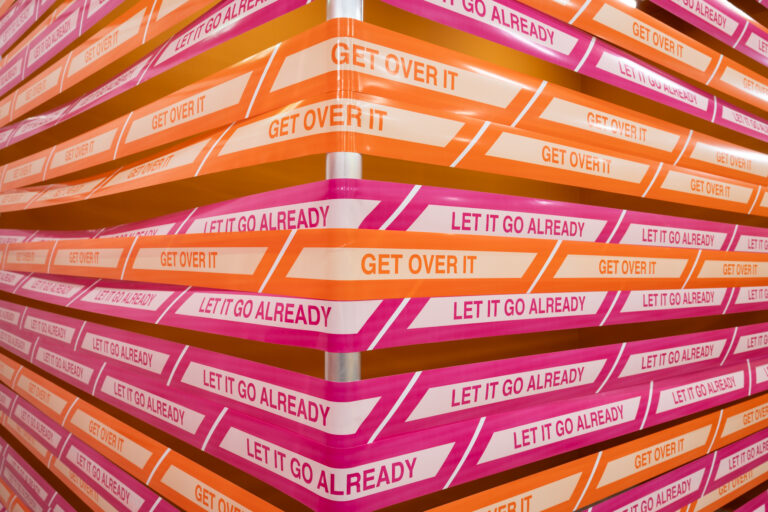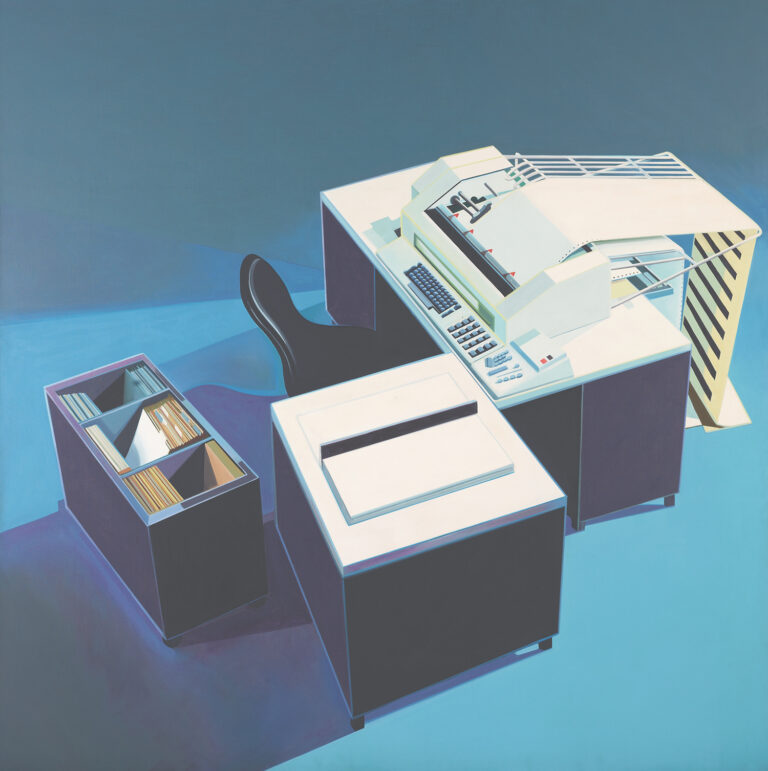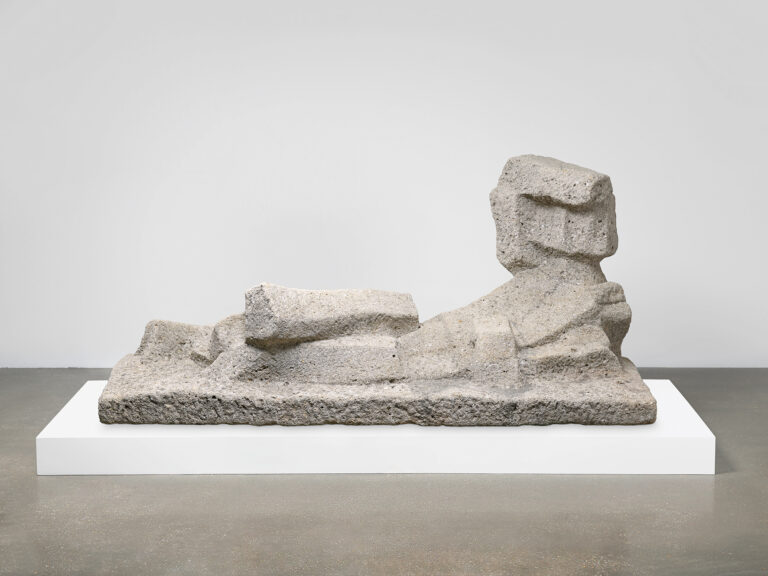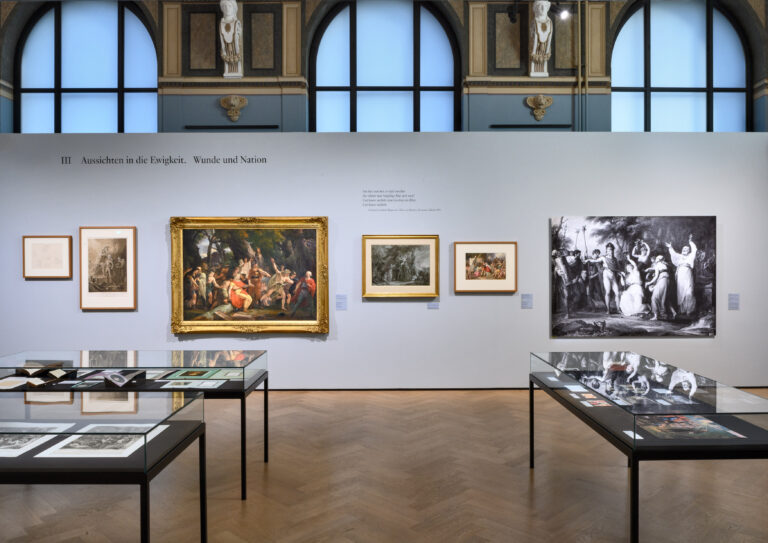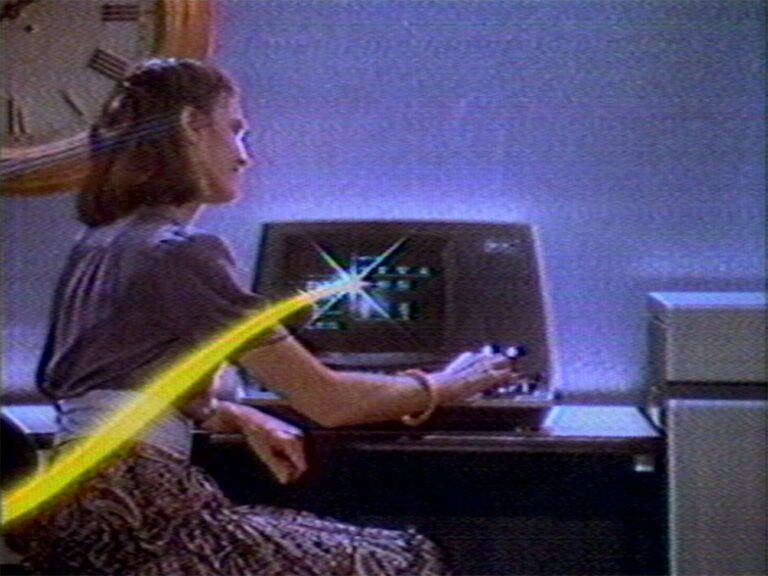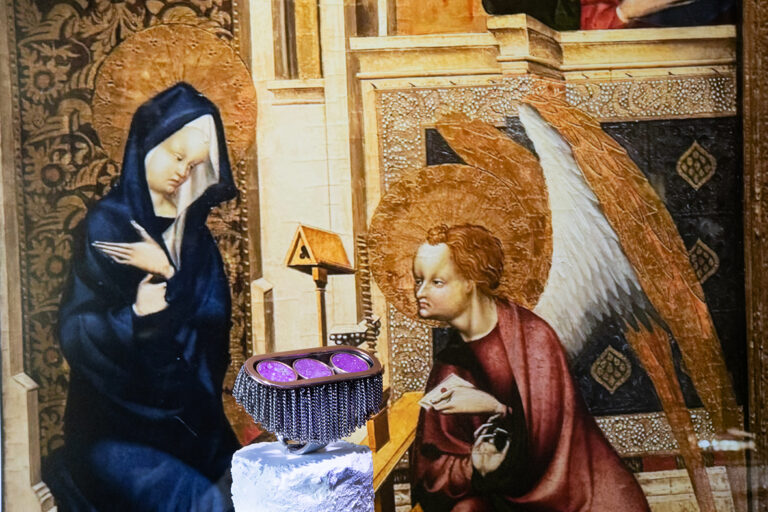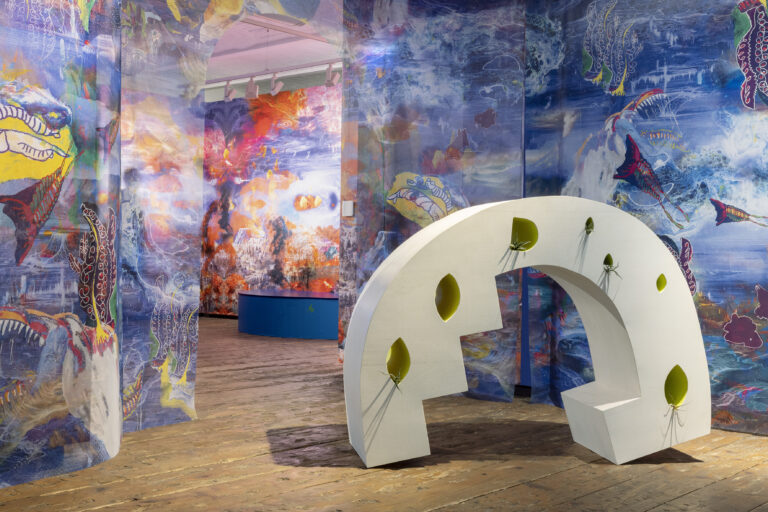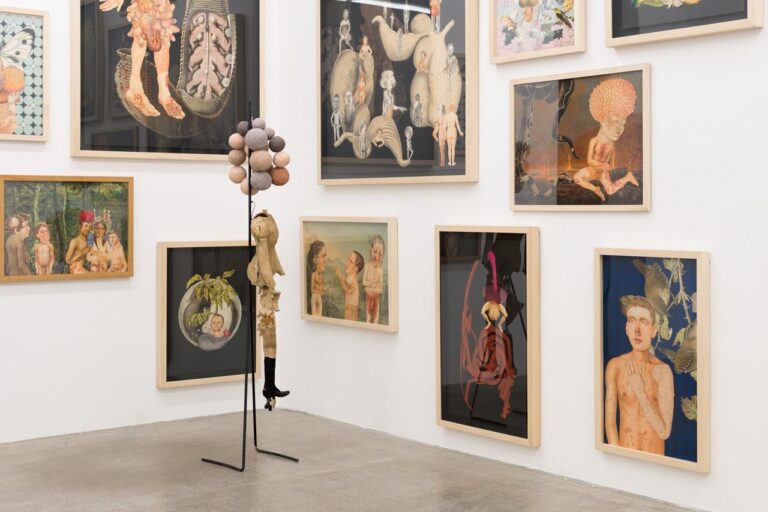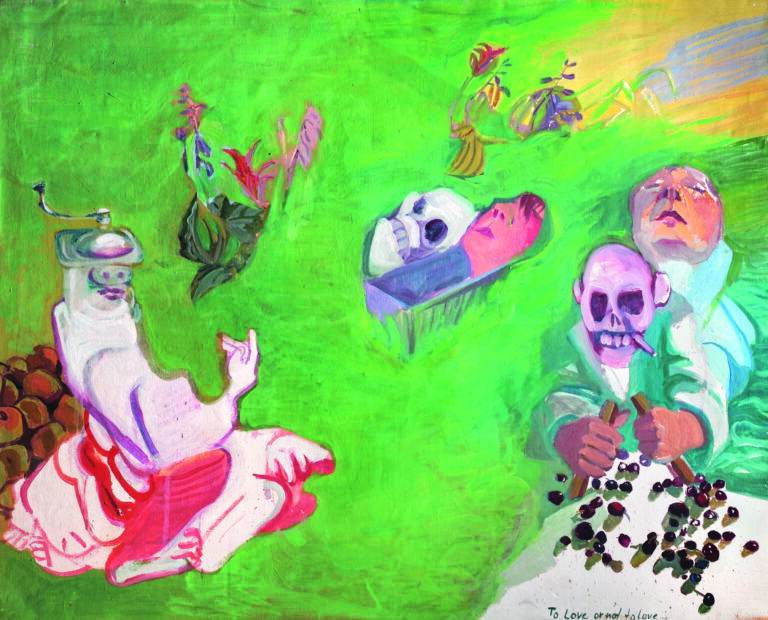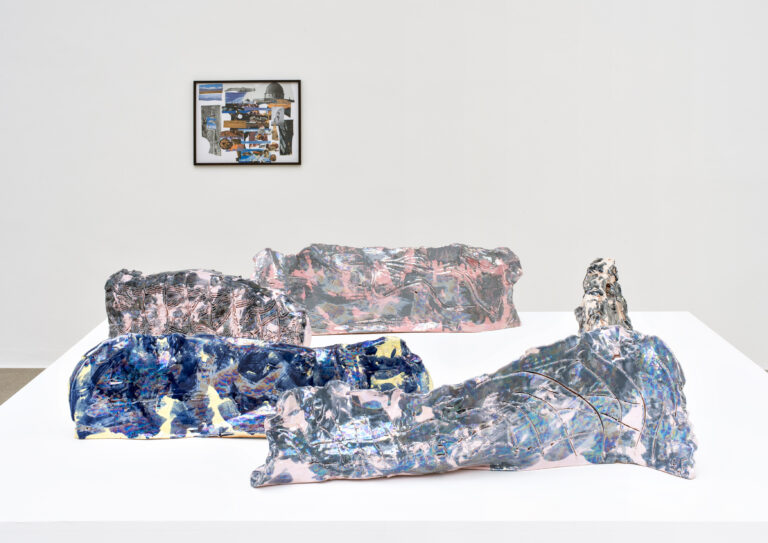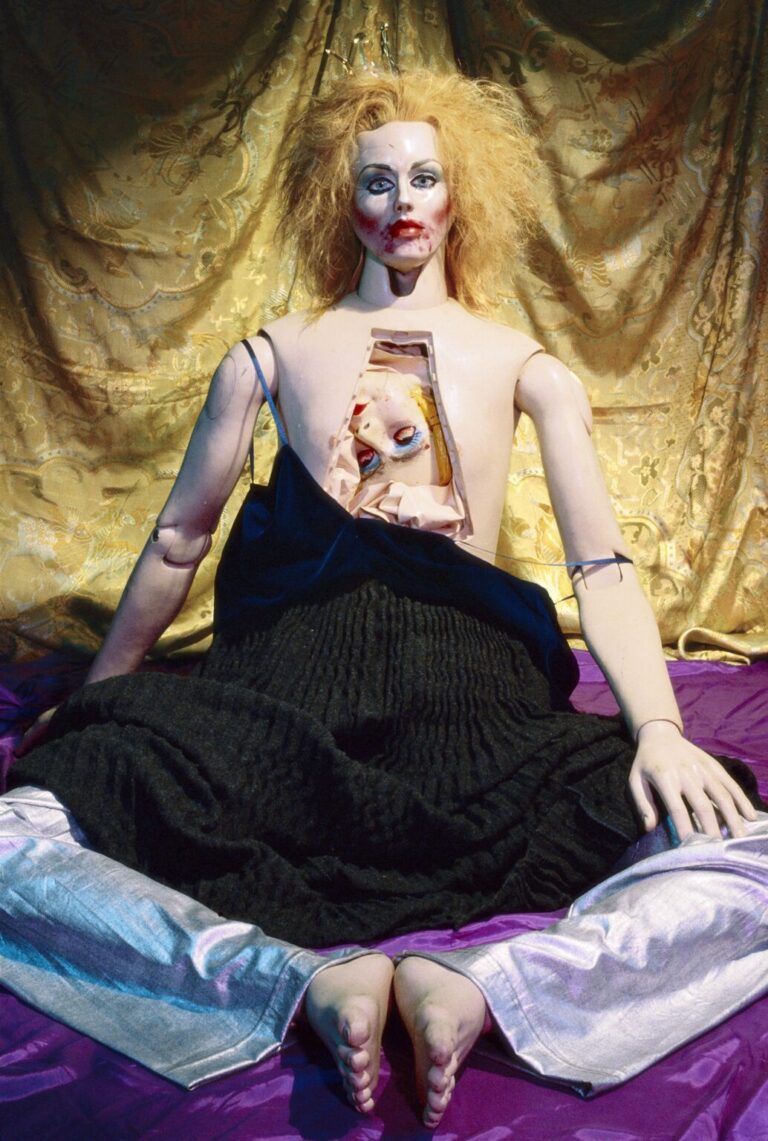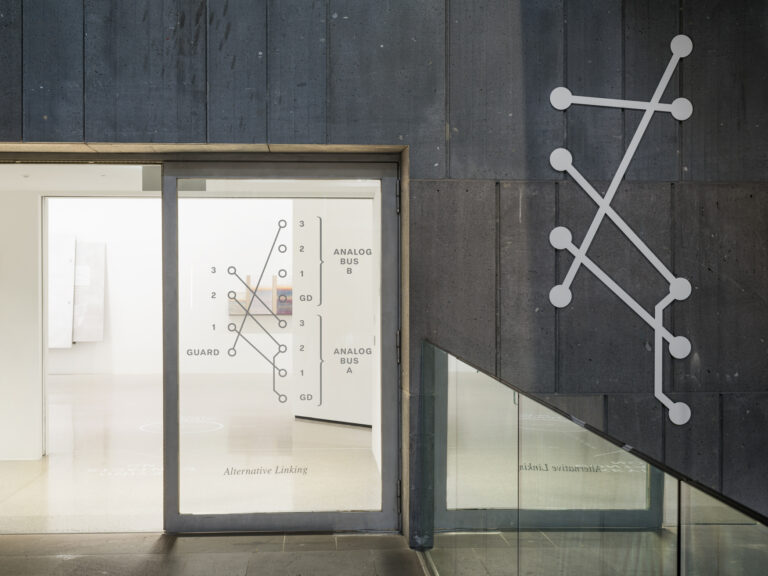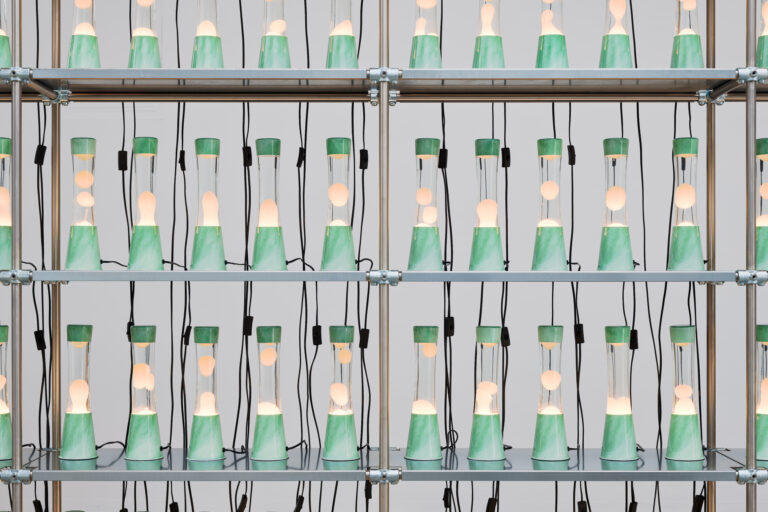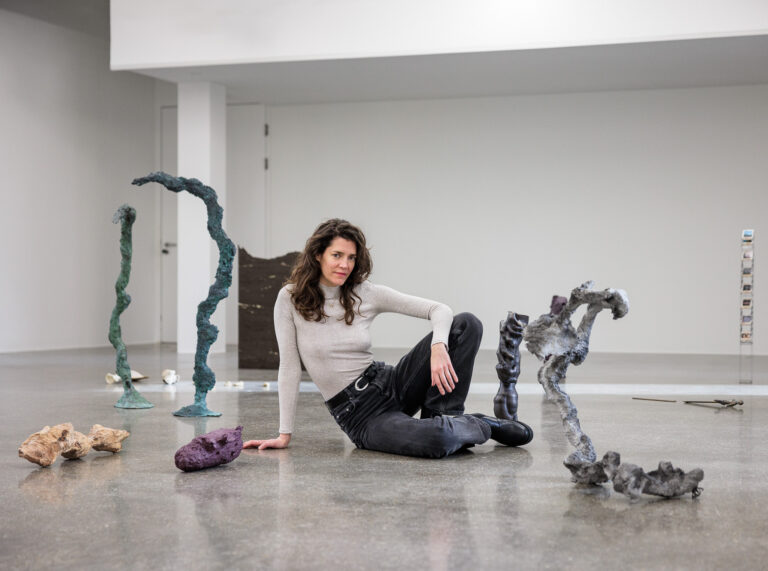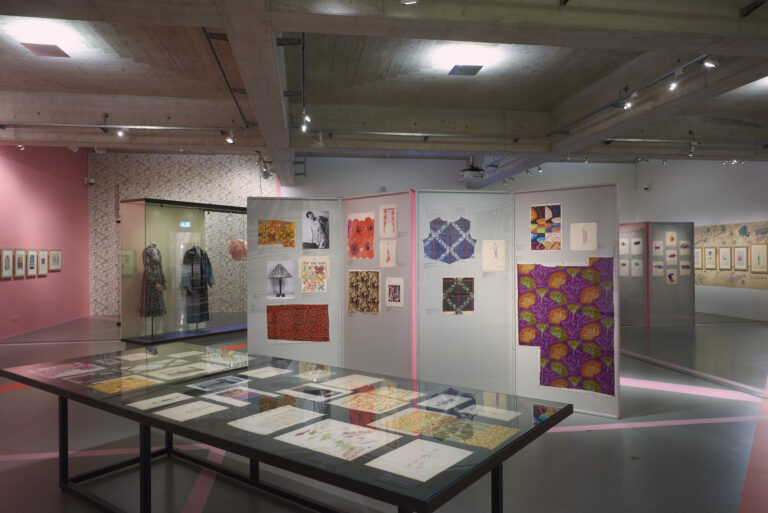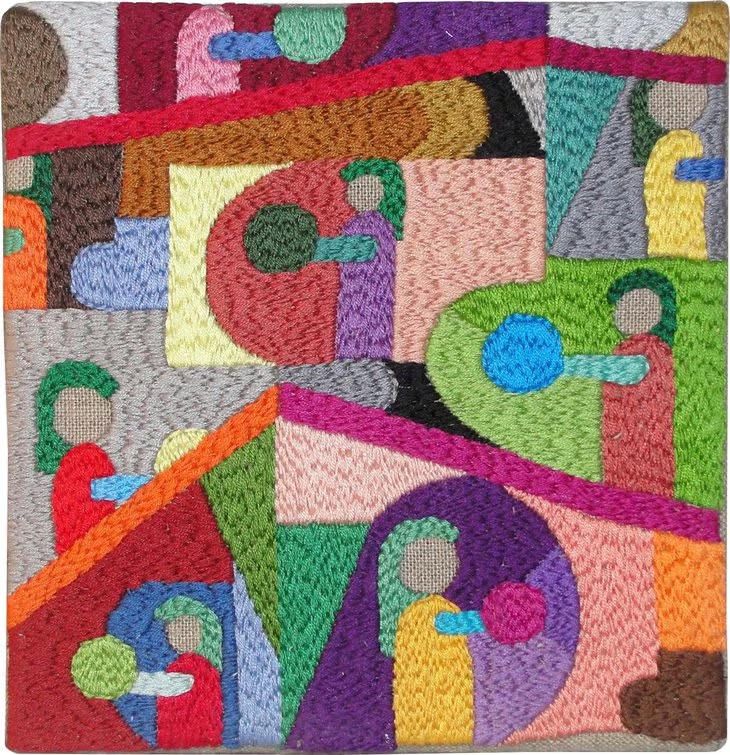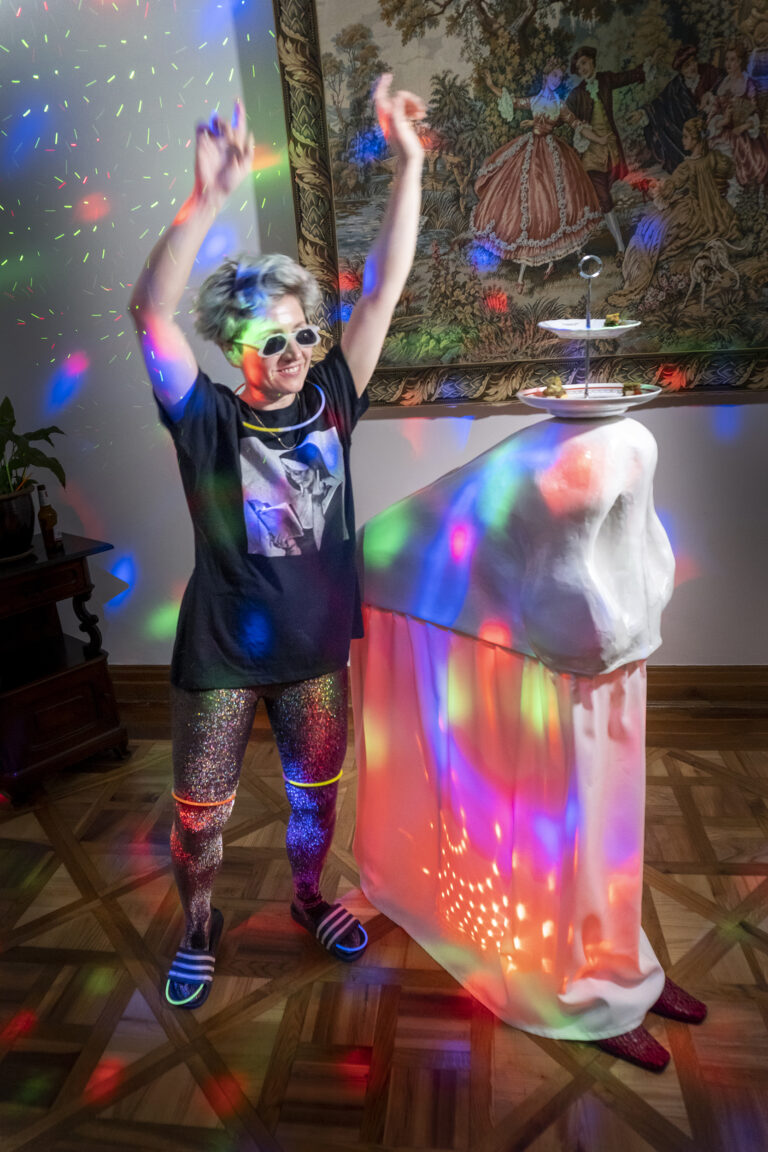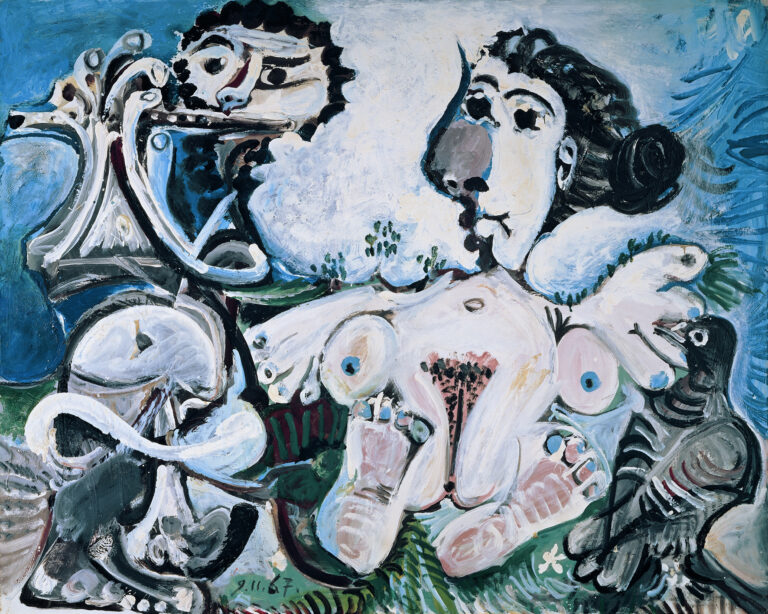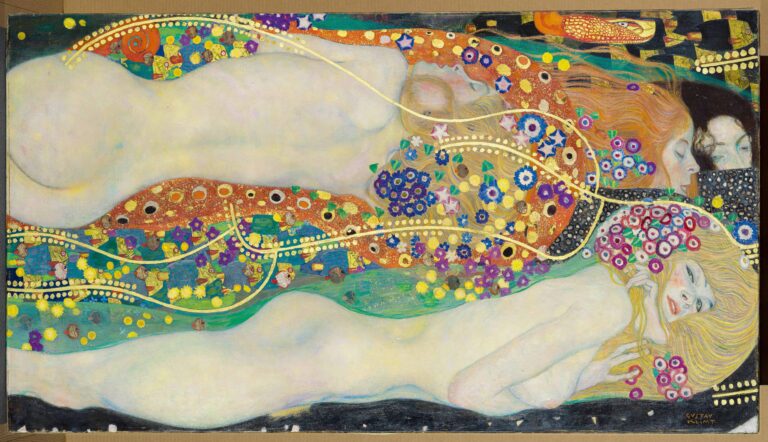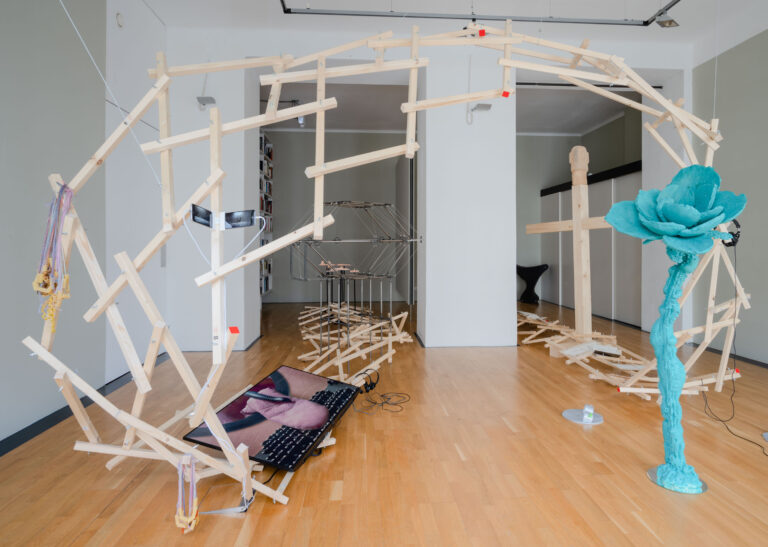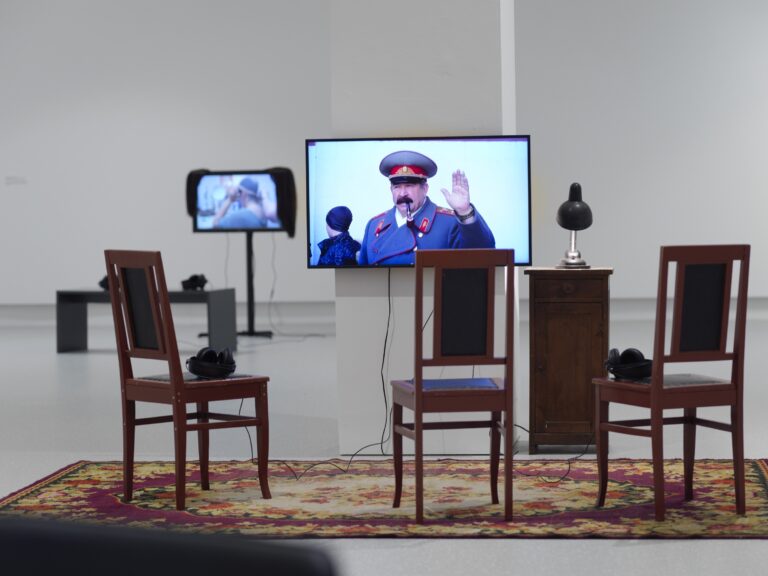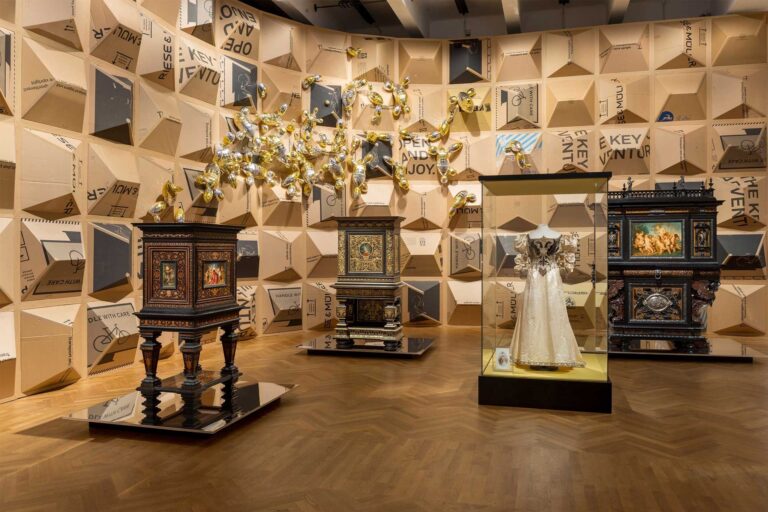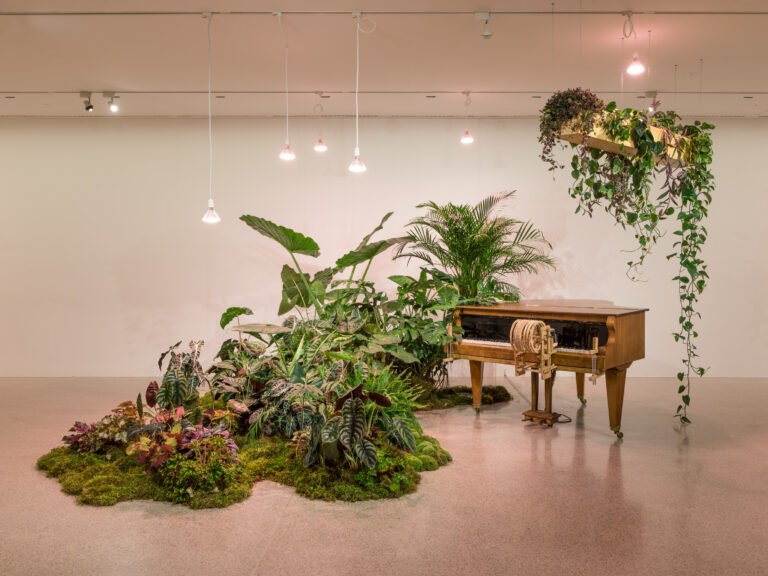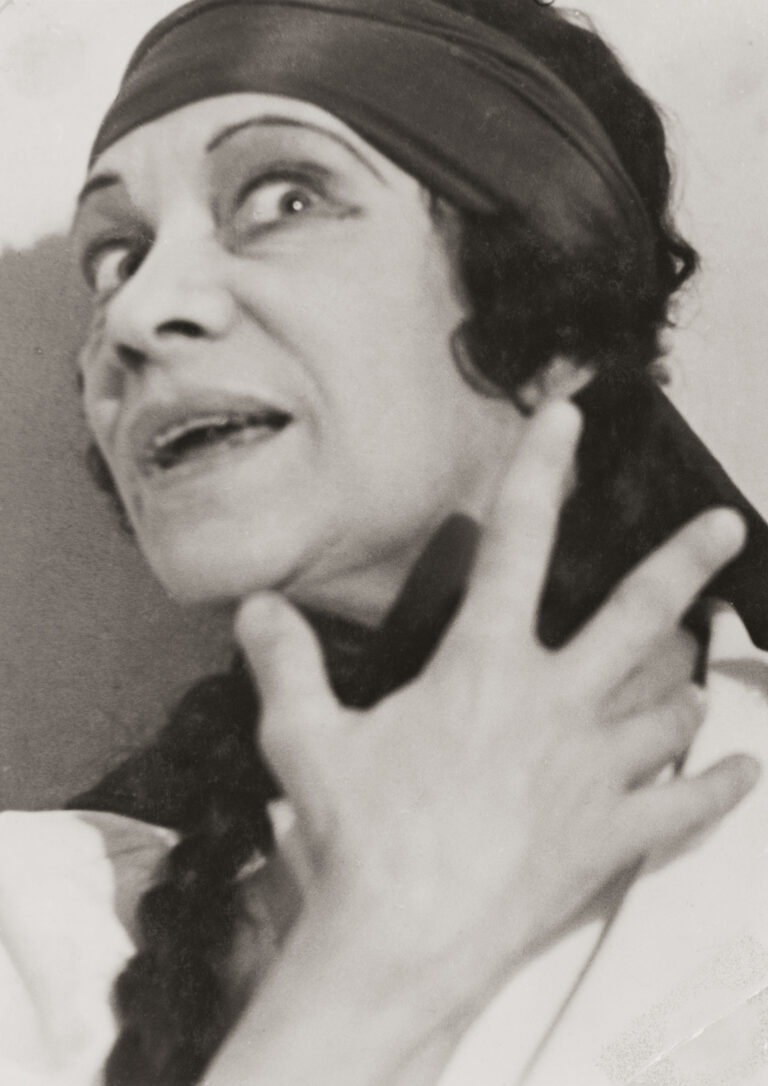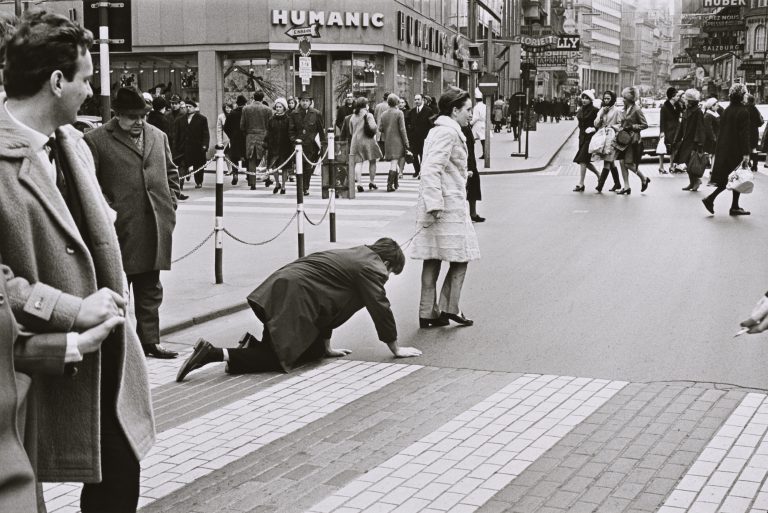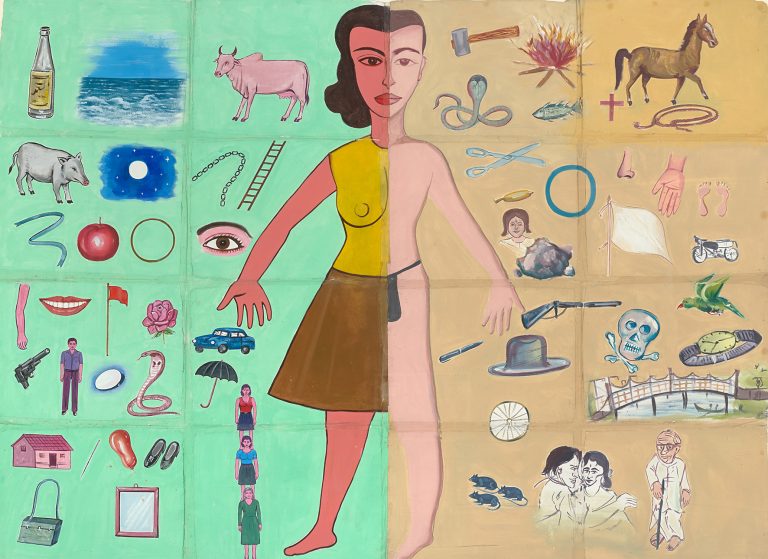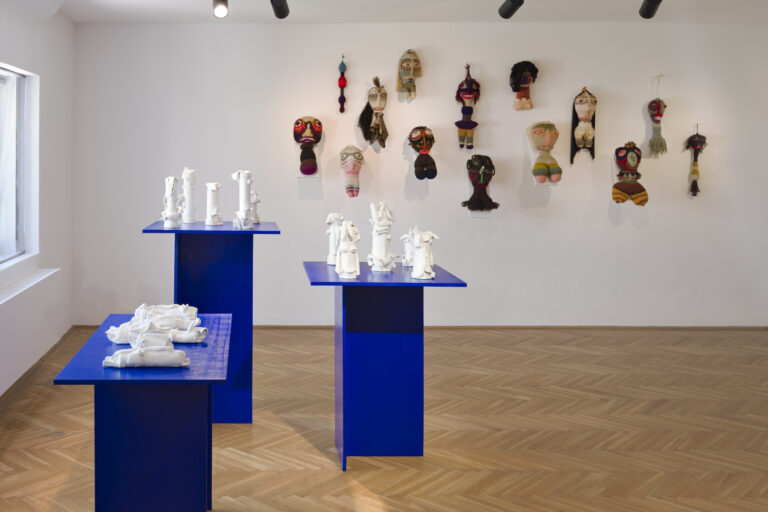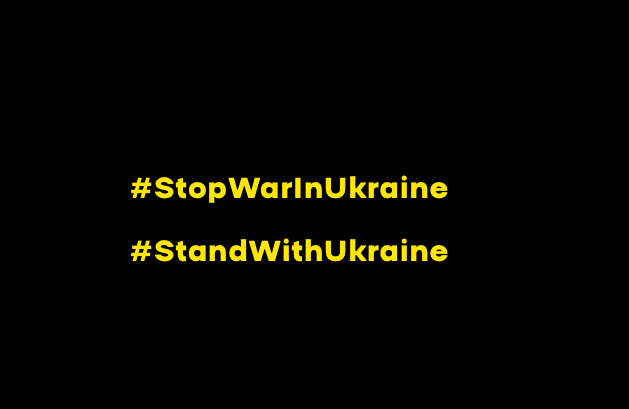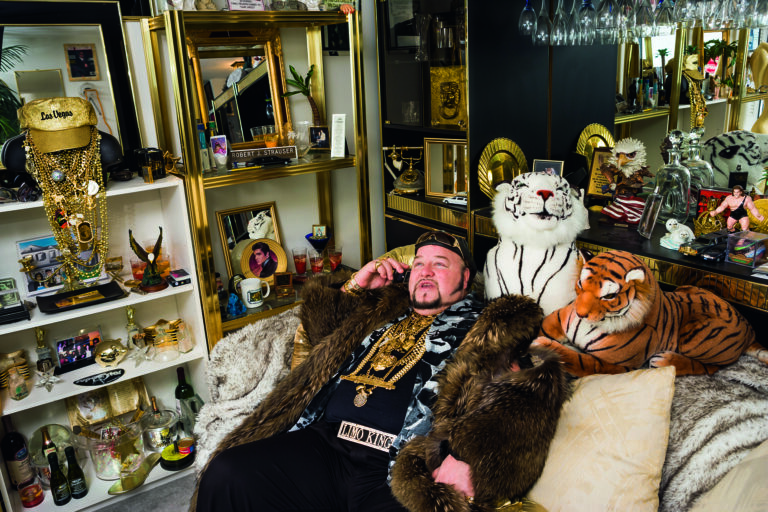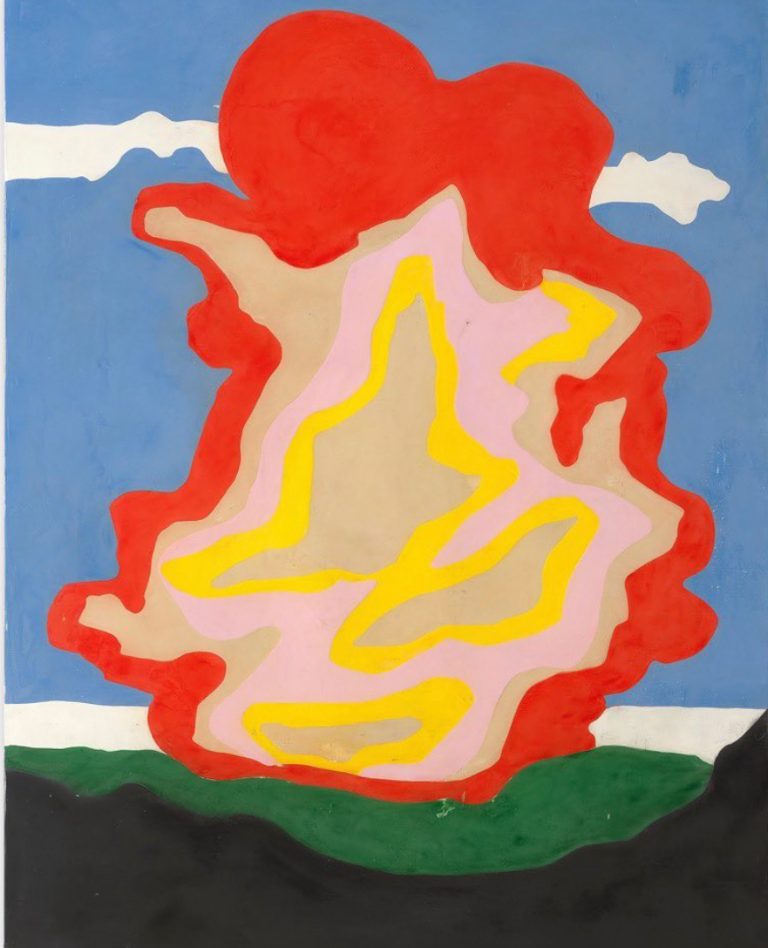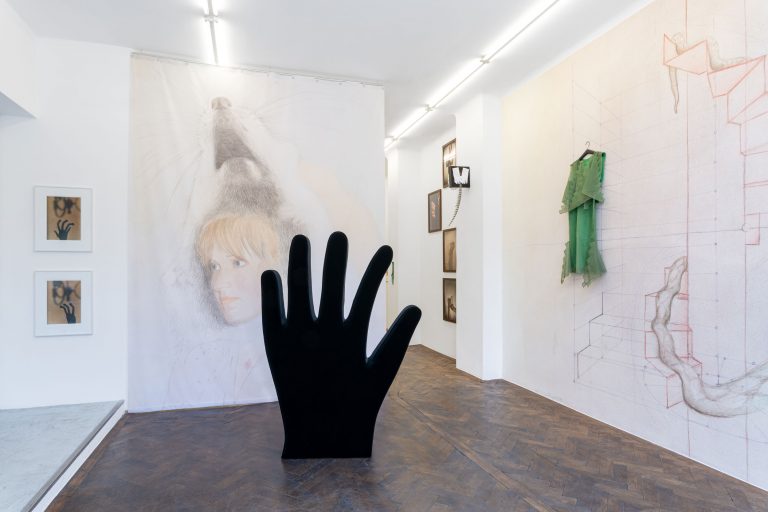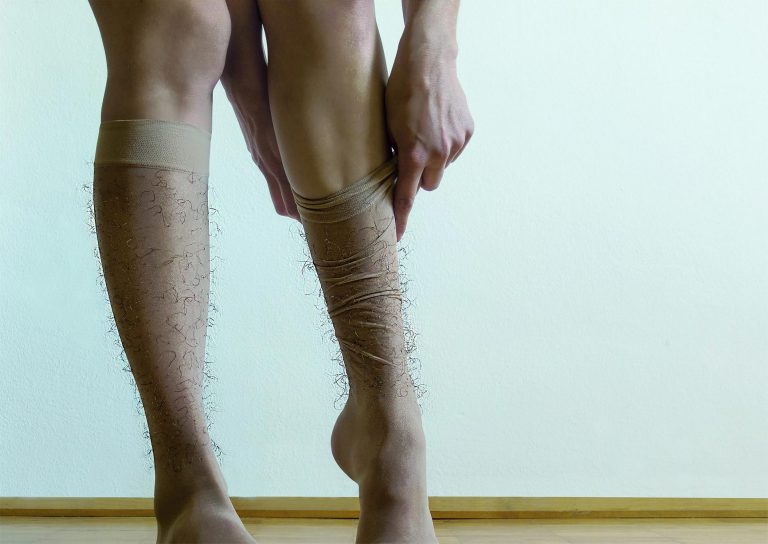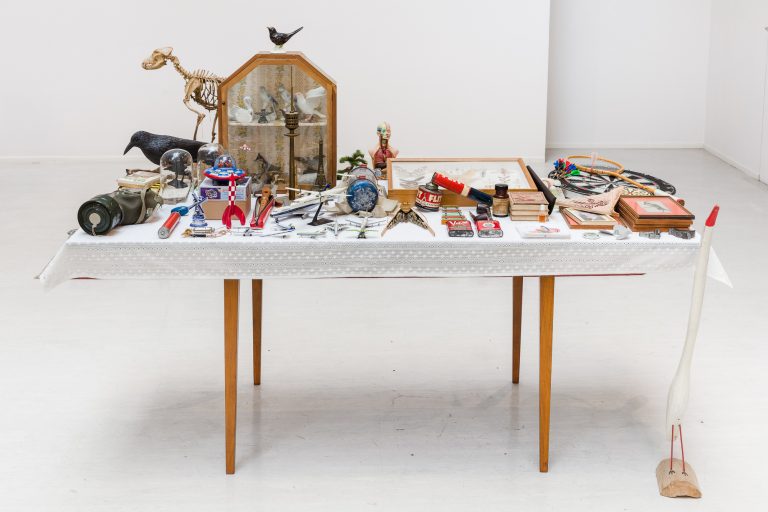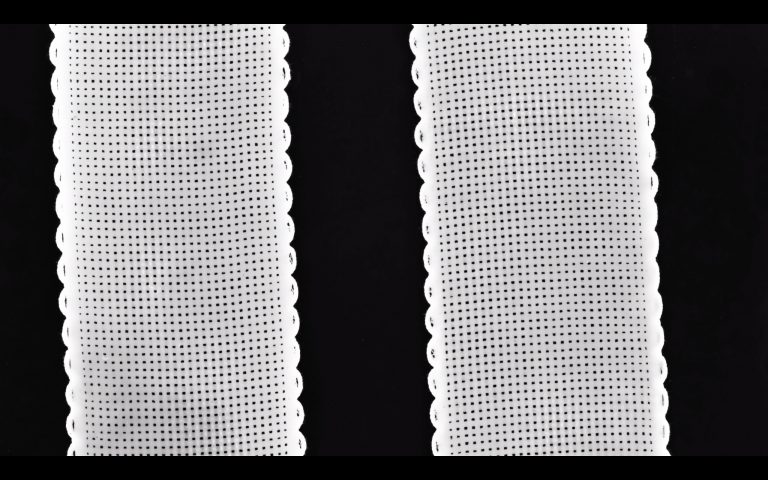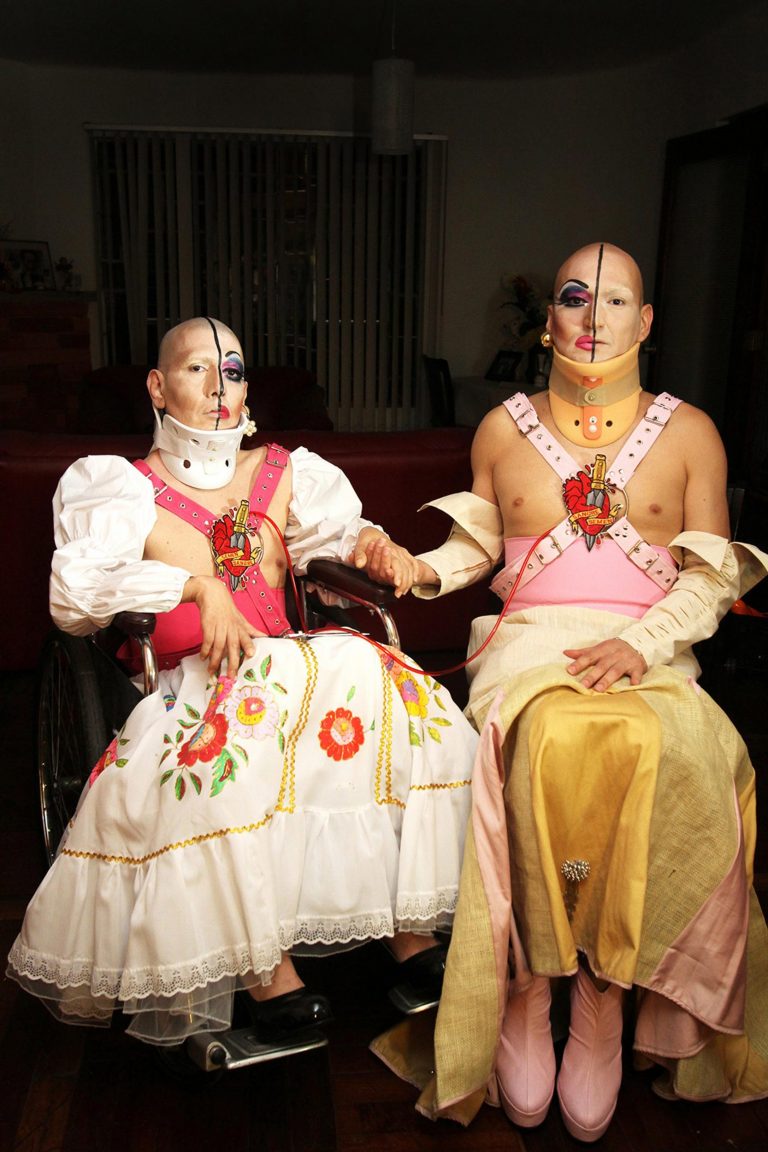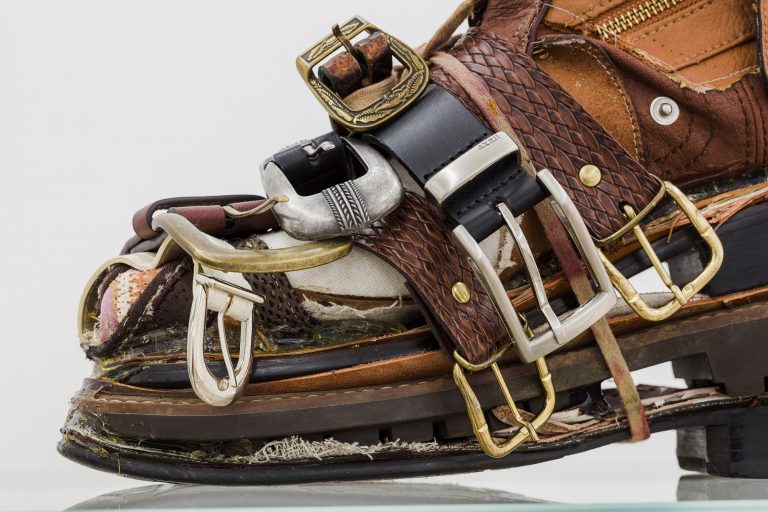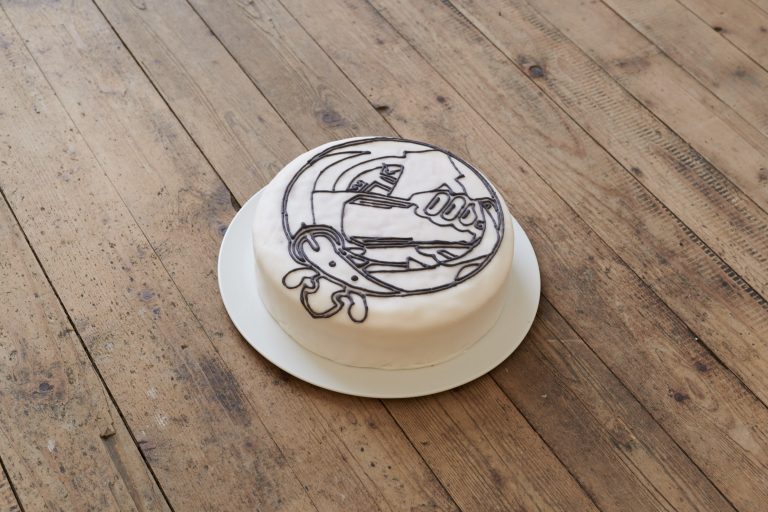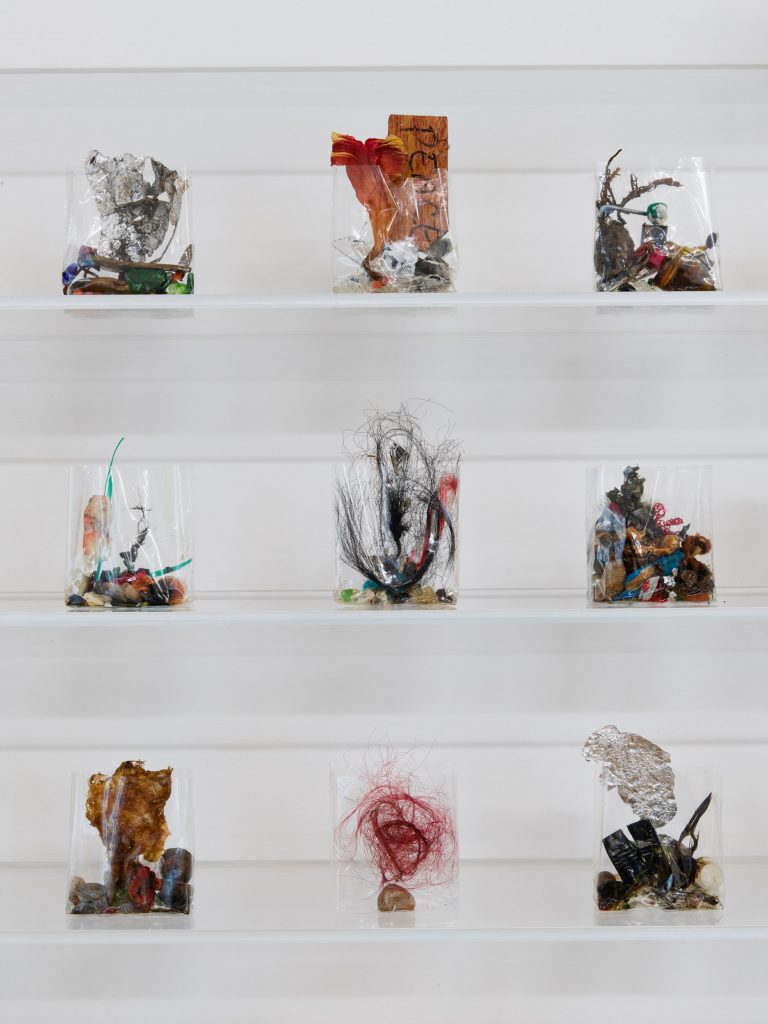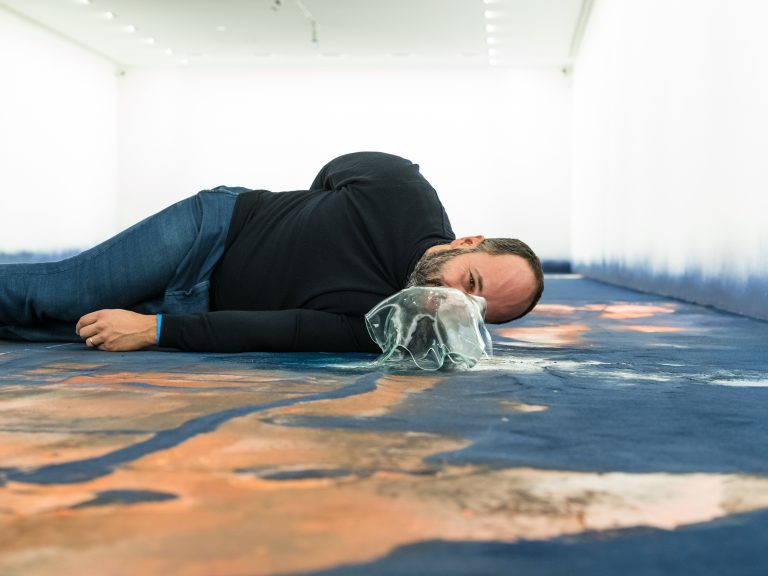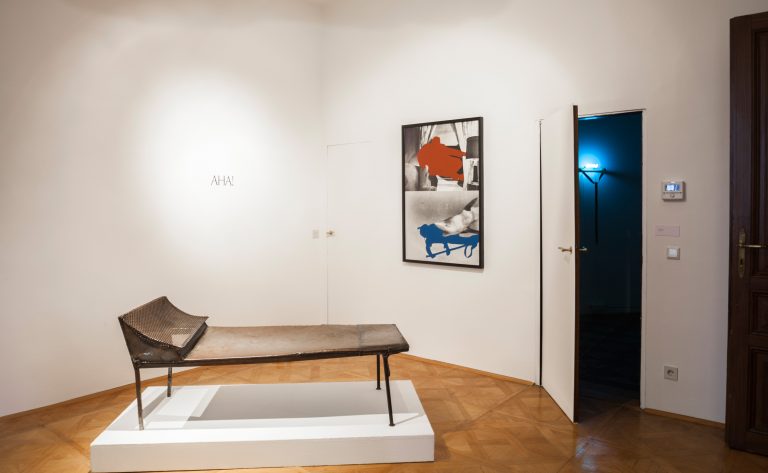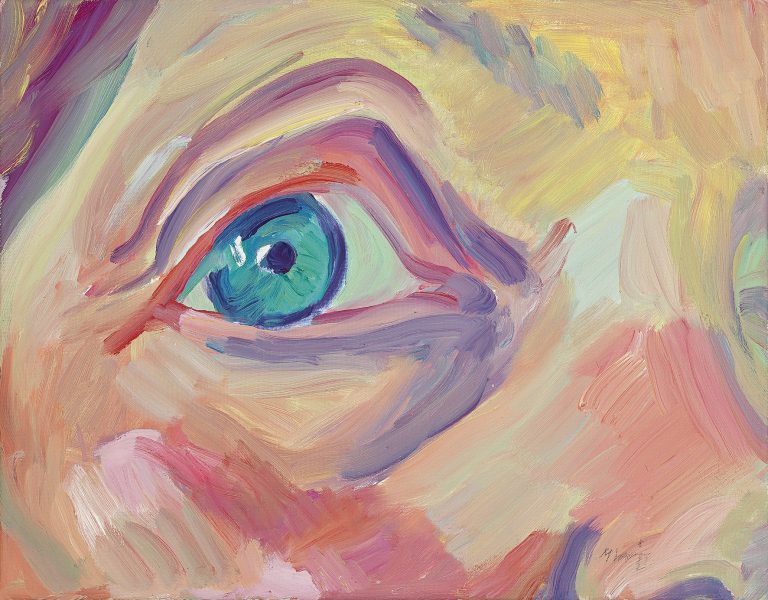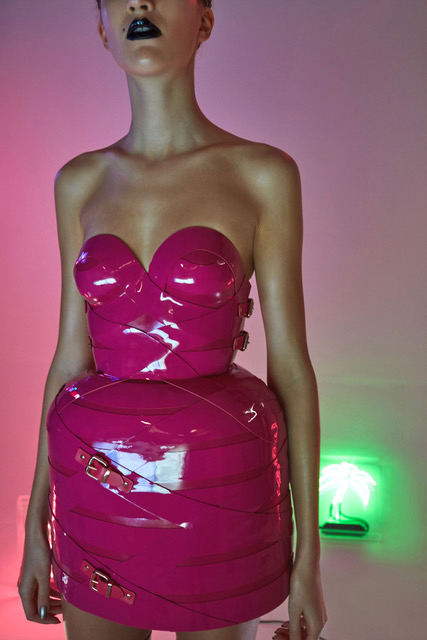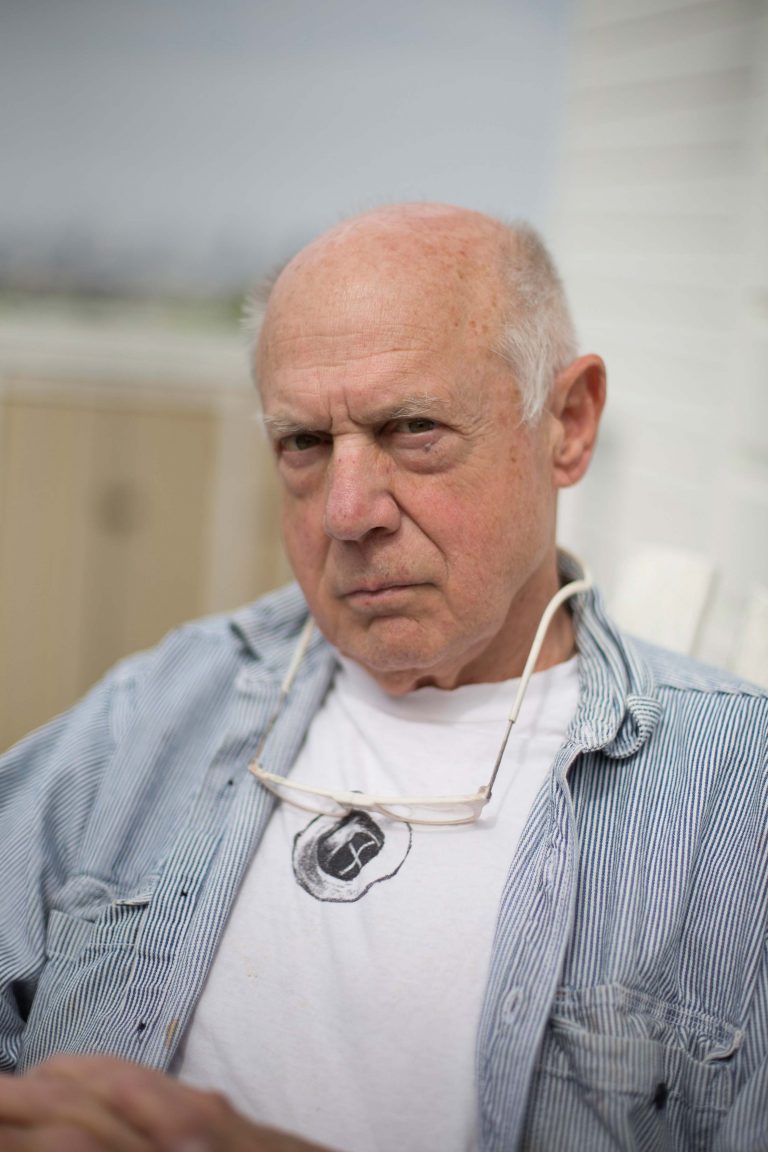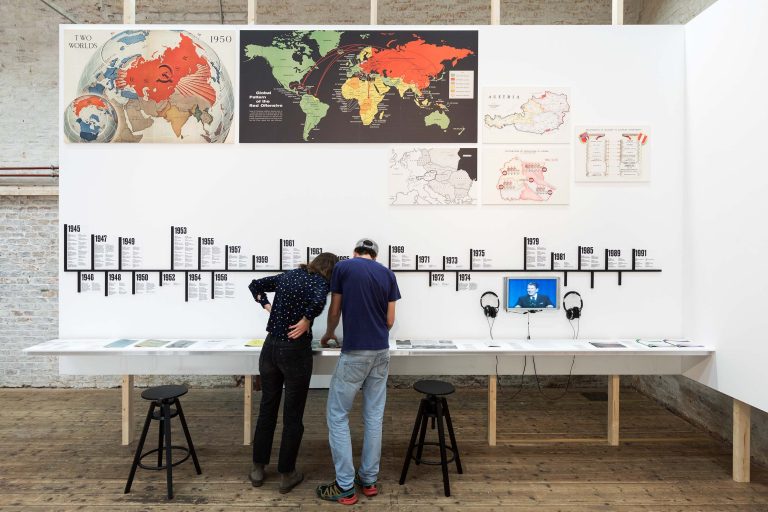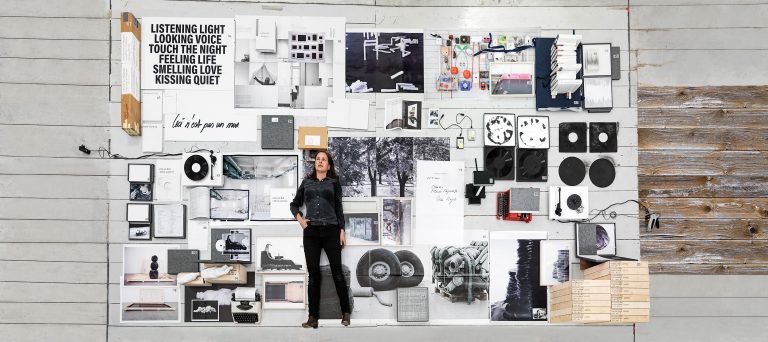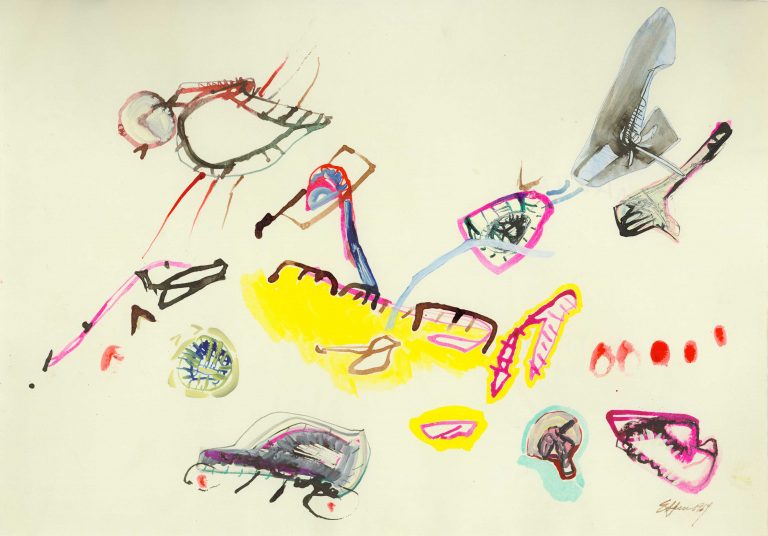Overcoming scarcity in open spaces – Thomas Feuerstein’s “Metabolica”
Thomas Feuerstein transforms the MQ into a speculative bio-laboratory—with tubes, algae, and a sculpture made of bioplastic. A text by Sabine B. Vogel.
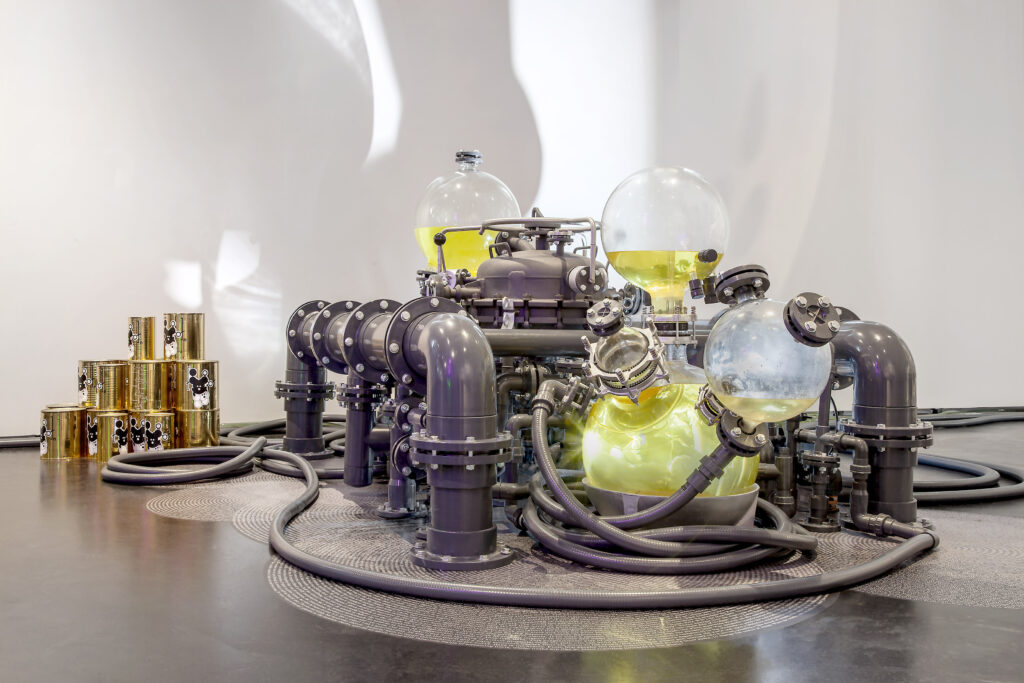
Exhibition view: METABOLICA – Thomas Feuerstein, MQ Freiraum © Atelier Feuerstein / Bildrecht Wien, 2025 | MuseumsQuartier Wien, Photo: Thomas Meyer
Huge tubes crisscross the open space, transforming the two exhibition rooms of the MuseumsQuartier into a biochemical laboratory. Greenish liquids swirl between the oversized apparatus illuminated in toxic colors. With all the equipment, pumps, and filters, you feel like you are in a futuristic research laboratory.
Everything flows from reactors into a kind of refinery. At the back, a kind of drilling tower moves up and down. Oil cannot be pumped, of course; an exhibition space cannot offer that. But what is being distilled and produced here? And what is the stranded whale doing in the second room—or is the object titled “Hydra” a submarine?
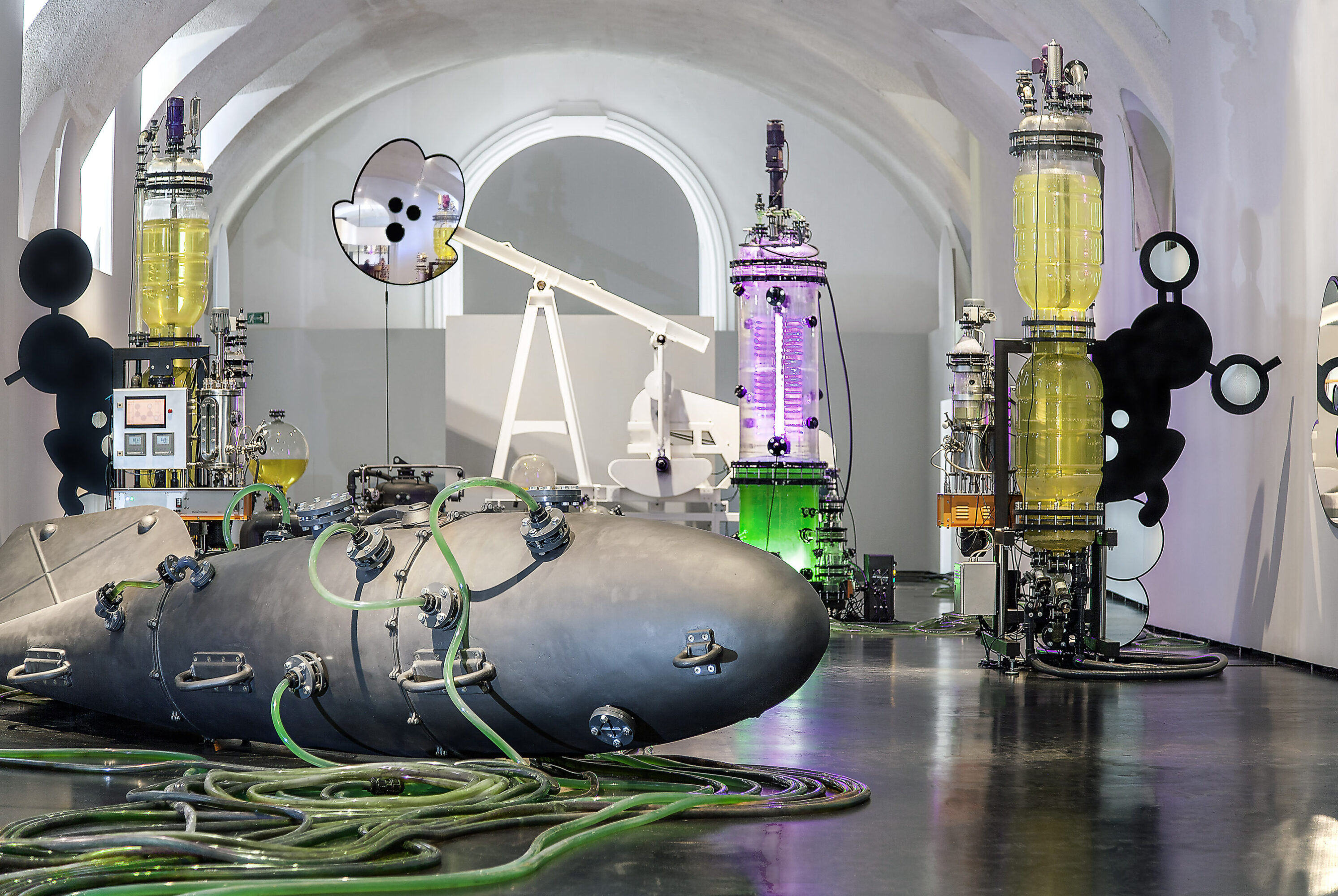
Exhibition view: METABOLICA – Thomas Feuerstein, MQ Freiraum © Atelier Feuerstein / Bildrecht Wien, 2025 | MuseumsQuartier Wien, Photo: Thomas Meyer
Thomas Feuerstein calls his impressive solo presentation “Metabolica.” Born in Innsbruck, the artist is known for his sculptures staged as experimental arrangements in which philosophy, art history, and biotechnology meet aspects of economics and politics. He is often interested in fundamental existential parameters, questions about the origin of life, the possibilities of autonomous machines, and omniscient algorithms. His exhibitions are reminiscent of laboratory kitchens, sometimes of a factory.
In his search for new contexts of meaning, it is often difficult to distinguish fact from fiction, at least for those unfamiliar with the field of biochemistry. As is so often the case in his installations, “Metabolica” also fascinates with the narrow boundary between disciplines, the strong visual design, and the pictorial exaggeration of processes with which Feuerstein demonstrates “possibilities for political and economic change.”
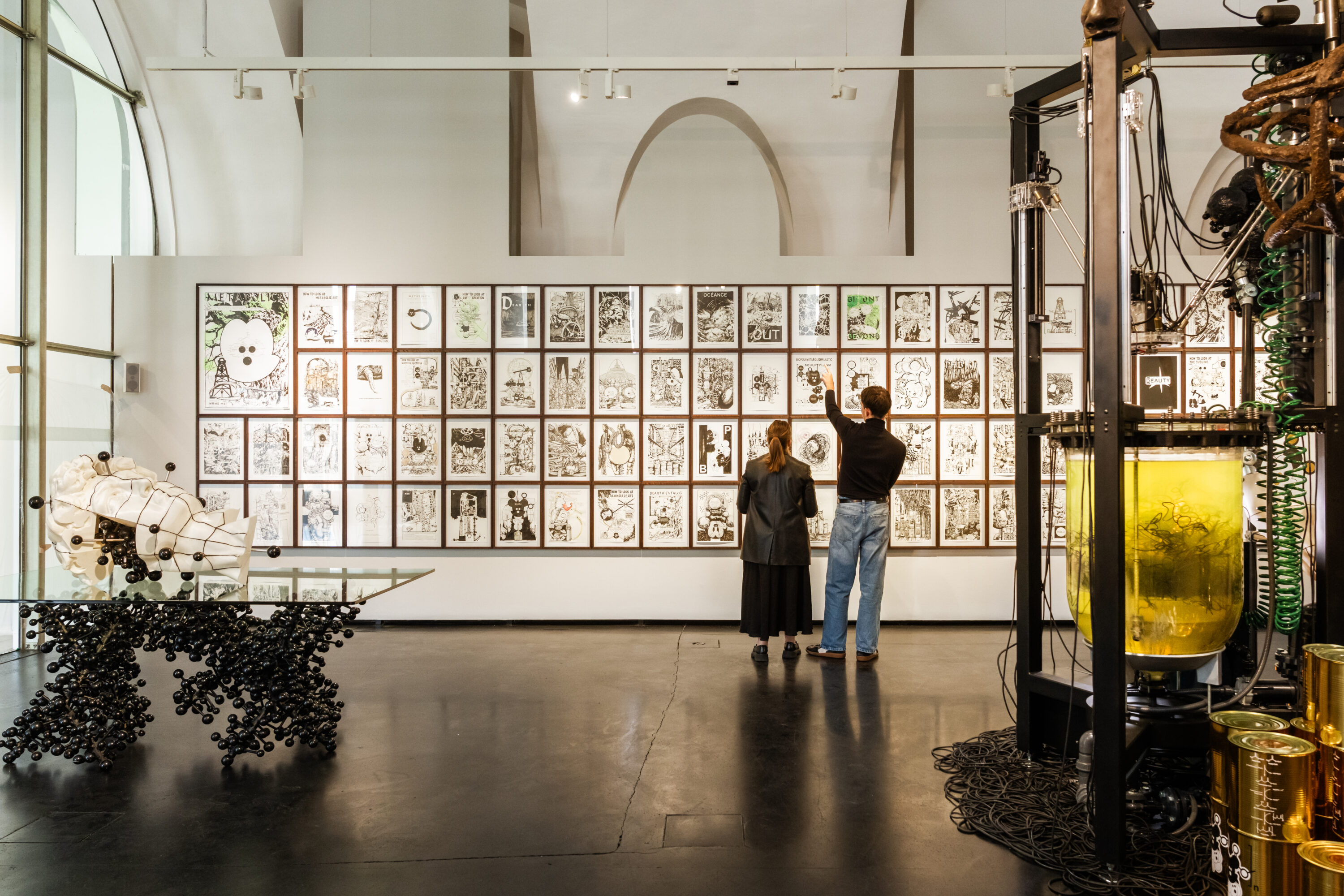
Exhibition view: METABOLICA – Thomas Feuerstein, MQ Freiraum © Atelier Feuerstein / Bildrecht Wien, 2025 | MuseumsQuartier Wien, Photo: Thomas Meyer
To this end, he has divided his exhibition into five “chapters” and is growing single-celled green algae. Thanks to the wall panels, we learn that ‘Hydra’ is a photobioreactor that filters plankton and pumps the biomass into the sculpture “Fatty Fantasy.” The converted oil pump is called “Mobby Dick” and pumps renewable plankton. The bioreactors are called “Ms. Mol and Mr. Mol,” where bacteria convert the fatty acids of the algae into the bioplastic polyhydroxybutyrate (PHB). Together, the two bioreactors illustrate the structure of a PHB molecule, we learn. Their shape is reminiscent of Mickey Mouse.
In the last chapter, sculptures made of PHB are “produced using 3D printers, cast in molds, or thermoplastically modeled.” According to the information boards, the entire process focuses on aspects such as the circular economy, resource scarcity, biodiversity, and “solutions to overcome ecological deficits.” It is described as a “factory of life” – sounds highly ambitious? It certainly is!
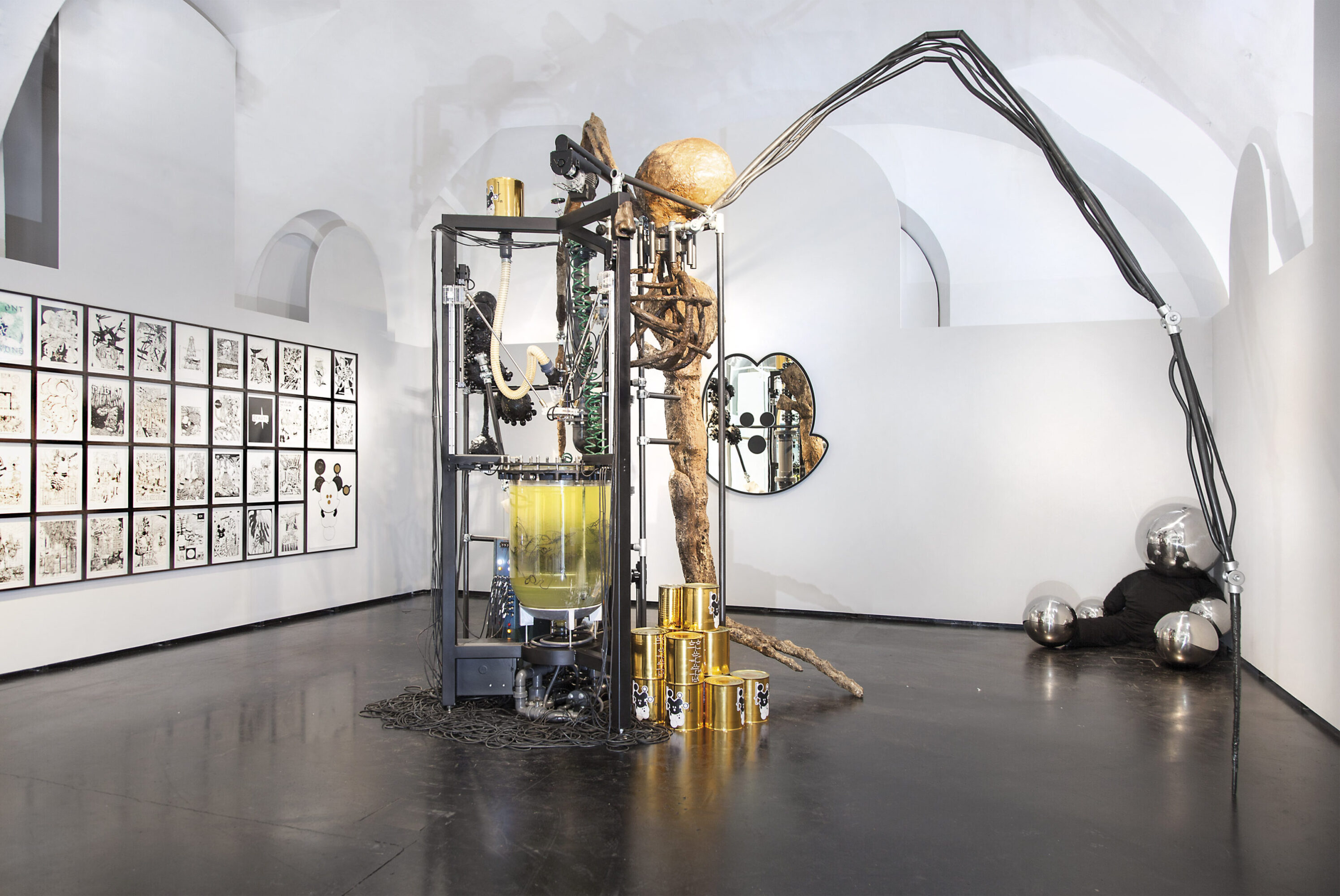
Exhibition view: METABOLICA – Thomas Feuerstein, MQ Freiraum © Atelier Feuerstein / Bildrecht Wien, 2025 | MuseumsQuartier Wien, Photo: Thomas Meyer
